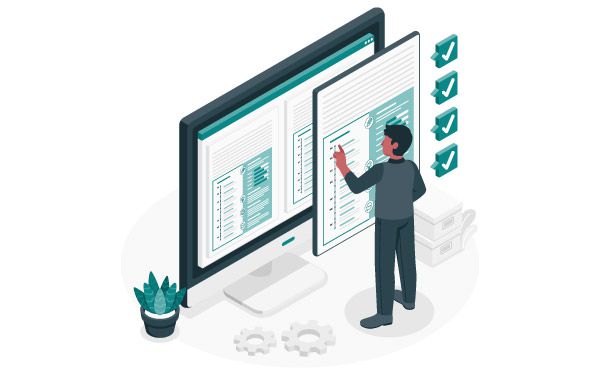Why Regulatory Compliance Needs Automated Quality Control

In today’s compliance-driven landscape, organizations must maintain rigorous documentation standards to satisfy regulatory bodies, protect reputations, and avoid costly penalties. Whether you’re in finance, healthcare, legal, or publishing, a single oversight in a document can trigger an audit, fines, or even legal consequences.
Unfortunately, manual document checks are no match for the speed and complexity of today’s regulatory requirements. This is why automated quality control is not just a convenience – it’s a necessity. In this article, we explore why quality control automation is essential for regulatory compliance, and how tools like automated document quality control software can help organizations meet these demands efficiently.
The Shortcomings of Manual Document Quality Control
Manual QC processes – like checklists, proofreading, and spot-checking – are slow, inconsistent, and vulnerable to human error. Teams often review high volumes of content under tight deadlines, increasing the likelihood of compliance violations.
Common issues include:
- Missing disclaimers or required legal language
- Incorrect document structures or formatting
- Outdated references or regulatory codes
- Unintentional modifications during editing
- Misaligned branding or tone
When documents like contracts, policy briefs, financial disclosures, or product labels don’t meet regulatory standards, organizations face severe consequences – ranging from regulatory fines to delayed approvals and reputational damage.
What Is Document Quality Control Automation?
Document quality control automation refers to the use of software tools to automatically review, validate, and ensure the consistency, structure, and compliance of documents. Unlike manual checks, automated quality control tools apply predefined rules to catch errors, inconsistencies, and noncompliance instantly.
These tools help organizations:
- Validate formatting and layout across large batches of documents
- Check for required metadata and structural elements
- Ensure content accuracy and consistency across versions
- Flag violations of regulatory or editorial standards
- Automate repetitive checks and reduce manual workloads
Whether you’re reviewing thousands of PDFs, editing policy documents in Microsoft Word, or managing internal documentation systems, automation brings speed and accuracy to every step of the process.
Benefits of Automated Quality Control for Regulatory Compliance
1. Speed and Efficiency
Manual QC can take hours per document. With quality control automation, documents are checked in seconds – without compromising thoroughness.
2. Consistency and Objectivity
Unlike humans, automated tools never skip a check or apply inconsistent judgment. Automated document quality control software ensures every document is reviewed against the same standards.
3. Accuracy and Risk Reduction
Automated systems catch minor issues before they turn into major compliance risks, minimizing errors that can result in fines or regulatory investigations.
4. Audit-Readiness
Many automated QC platforms generate detailed reports and logs, helping you demonstrate compliance to auditors with ease.
5. Scalable Document Workflows
As document volumes grow, Word QC automation software and PDF QC automation software allow you to scale without growing your compliance team.
Industries That Rely on QC Automation for Compliance
Healthcare and Life Sciences
- Automate validation of clinical documentation, research materials, and patient information to meet HIPAA and FDA requirements.
Legal and Regulatory Publishing
- Use document quality control automation to enforce legal document standards and ensure accuracy across legal texts and policy publications.
Key Features to Look For in Document Quality Control Software
When selecting a solution, ensure it includes:
- Custom rule engines for specific compliance standards
- Compatibility with both Word QC automation software and PDF QC automation software
- Real-time alerts and feedback
- Batch processing capabilities
- Exportable QC reports for audits
- Seamless integration into your document management systems
Platforms like PleasePublish’s Document Quality Control Automation check all the boxes, helping teams implement end-to-end automation without disrupting existing workflows.
Why Manual Compliance Can’t Keep Up
The truth is, compliance documentation is only getting more complex. Regulatory bodies are demanding more precision, more documentation, and faster delivery. Manual reviews alone can’t scale to meet these challenges.
Adopting automated document quality control software:
- Reduces human error
- Speeds up review cycles
- Ensures documents are always audit-ready
- Builds long-term confidence in your publishing and compliance workflows
Whether you’re working with Word documents, PDFs, or a mix of formats, automation ensures your content meets compliance standards before it reaches your audience – or your regulators.
Conclusion
Regulatory compliance doesn’t have to be a burden. With the right document quality control software, you can transform compliance into a streamlined, error-free process. Teams save time, reduce stress, and focus on delivering valuable content – while automation handles the rest.
If you’re still relying on manual checklists, it’s time to evolve. Discover how quality control automation can protect your brand, save time, and ensure 100% compliance – every time
Get the latest updates from Please+Publish
Recent Blogs
Previous Post
Next Post
CONNECT WITH US

Let's talk about how Please+Publish can help you






